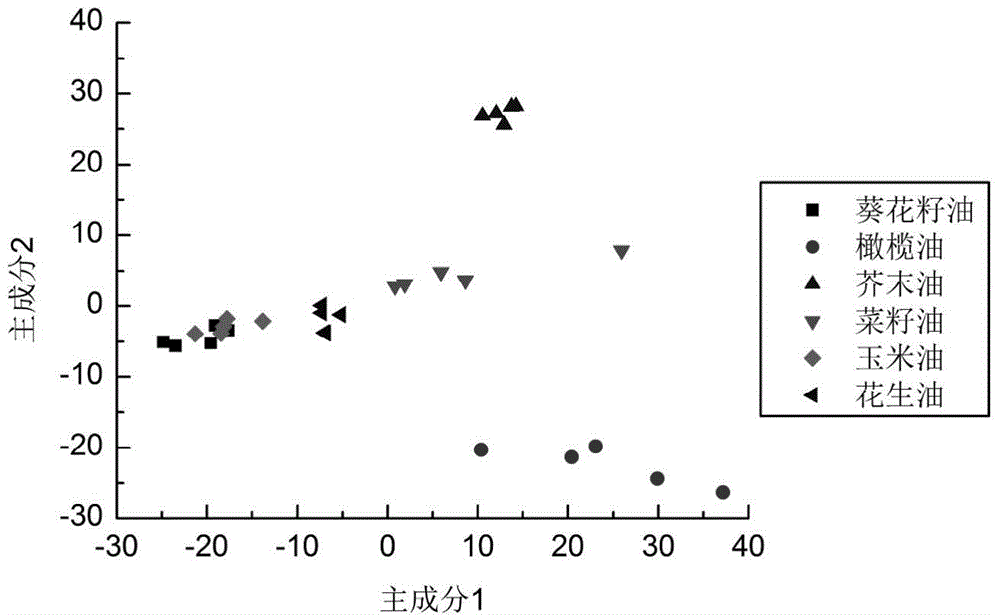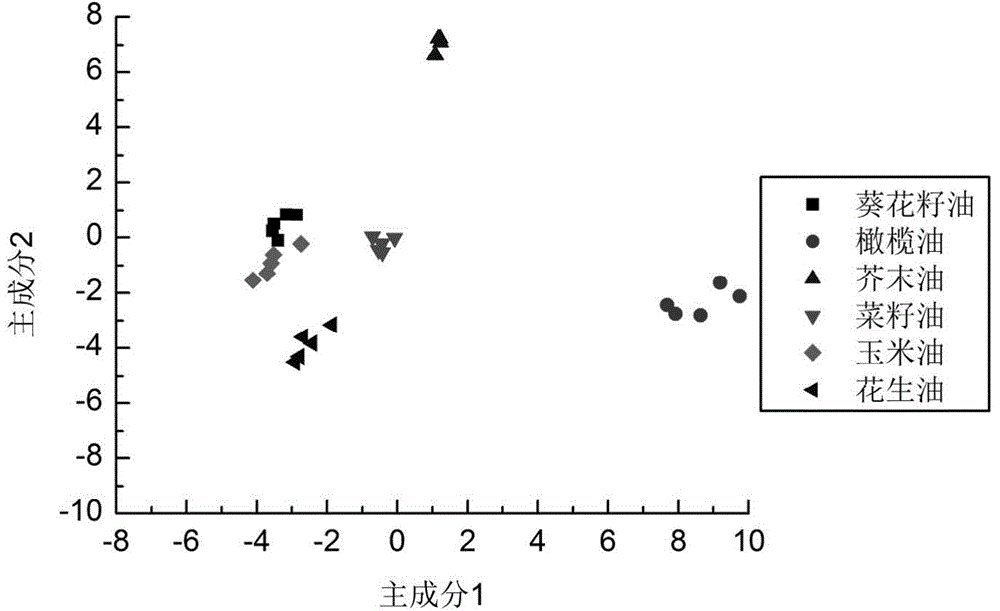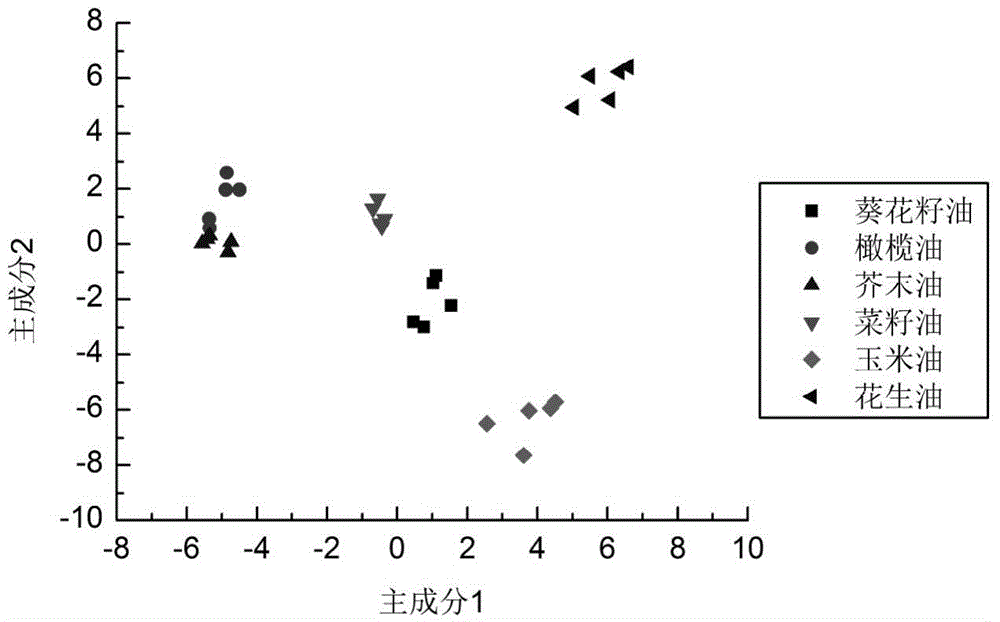Edible oil identification method based on mass spectrum and principal component analysis
A principal component analysis and mass spectrometry technology, applied in the field of edible oil identification based on mass spectrometry and principal component analysis, can solve the problems of high labor, material and time costs, few types of edible oils, and insufficient discrimination, and achieves sample prediction. The effect of improving processing steps, simple operation, and improving the technical level of analytical instruments
- Summary
- Abstract
- Description
- Claims
- Application Information
AI Technical Summary
Problems solved by technology
Method used
Image
Examples
Embodiment 1
[0032] 1. Establishment of edible oil standard sample mass spectrometry database
[0033] Six known edible oil samples (sunflower oil, olive oil, mustard oil, rapeseed oil, corn oil and peanut oil) were taken as standard samples and analyzed by mass spectrometry by solute transfer electrospray ionization. The detailed analysis conditions are as follows: mass-to-charge ratio range: 50-1200; capillary tip diameter: 15 μm; spray voltage: 2kv; ionization mode: positive ion mode; mass spectrometer: Thermo Scientific TSQ Quantum Access MAX triple quadrupole mass spectrometer.
[0034] (1) First add 25 μL analytical pure methanol solvent into the capillary; then inject 2 μL of known oil sample into the capillary; finally apply the spray voltage and perform mass spectrometry analysis, take the data after the signal is stable, and repeat the experiment 5 times for each oil sample .
[0035] (2) Perform principal component analysis on all the mass spectrometry data of the 6 edible oil ...
Embodiment 2
[0043] Using the mass spectrometry analysis method of edible oil standard samples to perform mass spectrometry analysis on unknown edible oil samples, extract the corresponding mass spectrum data according to the characteristic mass-to-charge ratio in the standard sample mass spectrometry database, and perform principal component analysis together with the edible oil standard sample mass spectrometry database, according to The scores of each principal component identify whether the unknown edible oil sample is a class of edible oil standard samples, such as Figure 7 shown, from Figure 7 The results of principal component analysis showed that the test oil sample was consistent with the sunflower oil in the edible oil standard sample, so the test oil sample was sunflower oil.
Embodiment 3
[0045] Using the mass spectrometry analysis method of edible oil standard samples to perform mass spectrometry analysis on unknown edible oil samples, extract the corresponding mass spectrum data according to the characteristic mass-to-charge ratio in the standard sample mass spectrometry database, and perform principal component analysis together with the edible oil standard sample mass spectrometry database, according to The scores of each principal component identify whether the unknown edible oil sample is a class of edible oil standard samples, such as Figure 8 shown, from Figure 8 The results of principal component analysis showed that the test oil sample was consistent with the olive oil in the edible oil standard sample, so the test oil sample was olive oil.
PUM
 Login to View More
Login to View More Abstract
Description
Claims
Application Information
 Login to View More
Login to View More - R&D
- Intellectual Property
- Life Sciences
- Materials
- Tech Scout
- Unparalleled Data Quality
- Higher Quality Content
- 60% Fewer Hallucinations
Browse by: Latest US Patents, China's latest patents, Technical Efficacy Thesaurus, Application Domain, Technology Topic, Popular Technical Reports.
© 2025 PatSnap. All rights reserved.Legal|Privacy policy|Modern Slavery Act Transparency Statement|Sitemap|About US| Contact US: help@patsnap.com



